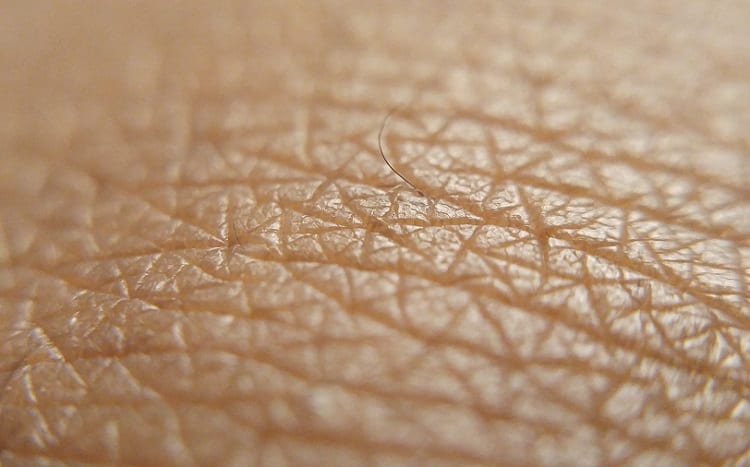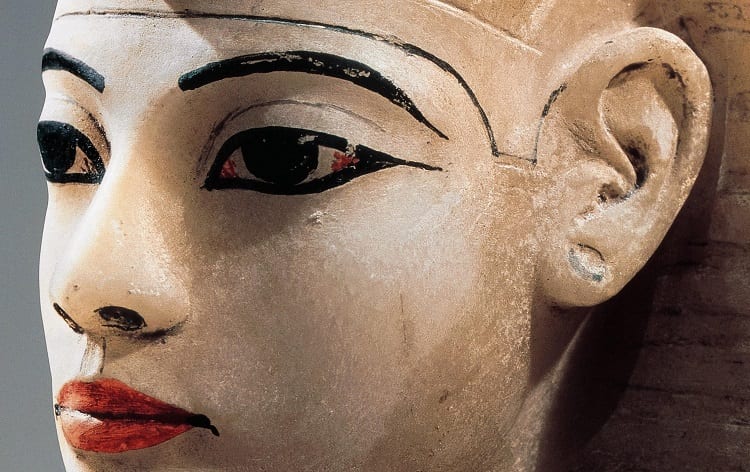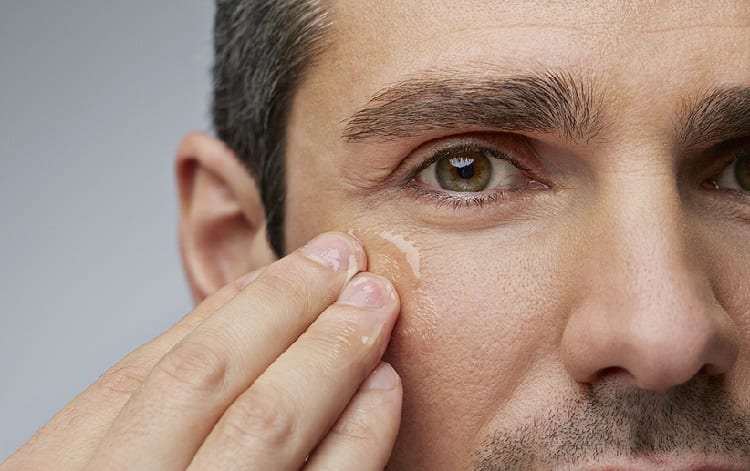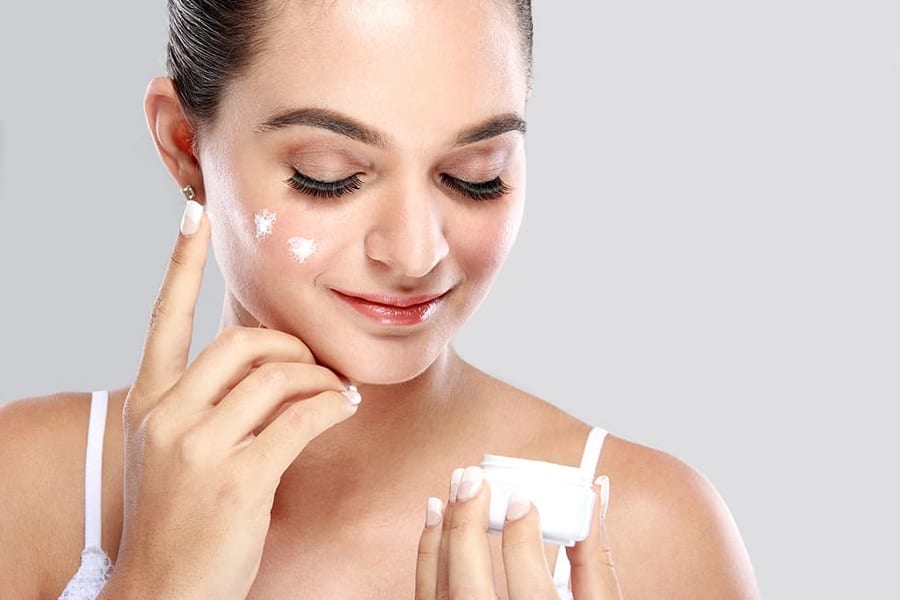Do you have a skincare regimen? Moisturizers, exfoliators, natural soaps, etcetera?
If not, you should get on that right now.
Your skin is the largest organ of your body. While we often just think of it as a protective layer that keeps our organs, muscles, and tissue safe, people forget that it requires the same level of care that you give to your heart, lungs, and kidney.
Skin care is important, and we’re going to explain why. After you read this guide, you’ll know about skin types, what skin does, and you’ll have a morning routine as well as an evening routine.
Contents
What is Skin, Actually?

Skin is the largest organ of your body. It’s not necessarily “in” your body, so while the wording sounds a bit funny, it’s the protective organ that helps your skeletal system and protect your surface-level blood vessels, houses hair follicles, and sweat glands that lead to the surface of your skin.
Your skin is an organ, meaning it serves a function in keeping your body healthy and regulated.
Like other organs, it is susceptible to changes in function based on diet and exercise, and over time shows “wear and tear” just as your other organs do. Treating your skin right is imperative to your overall health.
4 Skin Types
Your skin exists in one of four different types. While it still serves the same purpose as someone else’s skin of a different type, this will determine how you care for it, what sensitivities you have, and how you should proceed with moisturizing, cleaning, and overall care.
Normal
This is the ideal skin type, and one that few people have thanks to pollution and chemical skin cleaners. Normal skin means that you aren’t too oily, but you aren’t too dry.
You don’t blemish easily, but when you do, they go away quickly. There’s a good pH balance to normal skin types, which can help you out in a variety of ways including protection.
Healthy, normal skin is referred to as eudermic skin in scientific terminology. This balanced skin type can be temporarily achieved through skincare routines if you do not naturally have a normal skin type.
Dry
Dry skin is the opposite of oily skin. It doesn’t produce enough sebum—the main oil found on the surface of your skin – as other skin types do.
Because of this, your skin dries out, and the top layer of your epidermis can become cracked, appear chalky or ashy, and be uncomfortable.
Dry skin types need medicated assistance through moisturizers (and in some rare cases, actual medication prescribed by a dermatologist), to remain healthy and protect your body properly.
Oily
Sebum, the main oil in your skin that we talked about earlier, is going to be on the surface of your skin no matter what .Even for normal skin types. The problem is, if you have an oily skin type, you’ll have an excess of sebum.
Get ready to experience blackheads, glossy skin (visible in reflections and photographs), and this feeling of greasy skin that just doesn’t resemble that cleanliness you experience when you step out of the shower.
Oily skin produces too much sebum, but it does it for a reason. You need to remove just enough to keep your skin happy, and may be subject to more rigorous skincare routines for more intervals throughout the day to keep excess sebum at bay, and maintain healthy skin.
Combination
On your face, you have something referred to as the T-zone. Imagine a large capital T on your face, where the top line runs along the peaks of your eyebrows, and the vertical line extends down from between your eyebrows to your chin.
You could have one skin type on your left side, and another on your forehead. It’s a combination of the other three skin types. The reason that this is labeled as its own skin type is because there is an apparent pH imbalance in your skin that causes this issue.
You need specialized moisturizers, body washes, and cosmetics that can equalize across multiple skin types.
History of Skincare

It didn’t take long for us humans to realize that skin was important, and reacted to our environment and what we put on it.
As far back as we can record the existence of humanity, we can see skincare routines, even if they don’t seem so noticeable. Even cavemen would use certain rocks and wood to remove built-up dirt from their skin.
Unlike internal organs, which we obviously cannot see, we’ve always been able to interact with our skin. However, the first recorded use of cosmetics in terms of skincare was in 3000 BC, in the times of Ancient Egypt.
Your appearance was as important as your wealth. If you were wealthy, then you would spend hours every single day to look your best. It would not only make you look beautiful and elegant, but on top of that, the Egyptian sun would bear down intense heat, and cosmetics could protect you from that.
They would layer on extreme levels of cosmetics, whereas today we have SPF-inclusive makeup or sunscreen/sunblock that we can quickly apply for the same desired outcome.
In ancient Rome and Greece, you would encounter a similar trend. However, high society aristocrats would actually have indentured slaves who would individually pluck every hair off of the person’s body (save for the head and facial hair) in an effort to be sleek and smooth.
During the 18th century (BC), China began favoring a pale look that sparked an entire multi-generational look. The Elizabethan era also saw an increase in products that whitened the skin further, such as lead-based powders.
The thing is… this didn’t really have much to do with skincare. They would just apply new layers when their current layer wore out, and then they would have a thick coating of makeup that required extra-strong chemicals and solvents to remove.
Fast forward to the modern era and the introduction of the FDA in 1906, and you have modern cosmetics and skincare products as we know them.
Since then, we have collectively found ingredients that can be harmful or otherwise dangerous to a person, and have removed them. As time goes on, cosmetics and skincare products will continue to evolve and change.
Morning Skin Care
In the morning, you should revitalize your skin. It endured friction with your bedsheets through the night, sweating, and having certain pores and glands blocked by fabrics for hours on end. Your morning skincare routine is critical for the rest of your day.
This basic morning skincare routine will set you up for a good day, and help your skin remain steadfast from morning until night. Of course, there is a nighttime skincare routine that we’ll get into as well.
Basic Hygiene
Cleaning your skin is critical to its function. Your skin is constantly releasing dirt, oil, and sweat from your pores and sweat glands.
Without clean skin, it can’t breathe. We know that your skin doesn’t actually breathe like a set of lungs, but that constant exposure to oxygen is actually beneficial for keeping the surface of your skin clean.
The top layer of your skin is completely dead, but because of that, it’s not self-regulating oil production and keeping everything clear.
Exposure to oxygen simply helps by preventing excess sweat and dirt buildup more than anything else. Basic hygiene accounts for showering, scrubbing, and removing dirt from the surface of your skin.
Cleansing
Cleansing is what you use when your skin isn’t dirty, but isn’t “fresh” or recently cleaned.
Oftentimes, people use facial cleansers halfway through the day to take off the last six to eight hours worth of dirt and environmental damage. This helps clear out your pores and keep you feeling fresh until bedtime, when your evening skincare routine should take place.
Cleansers are important, but not critical. These are typically facial cleansers, although you may find some leave-in cleansers that help remove dirt from the surface of your arms, legs, and chest if you experience excess sweating throughout the day.
Toning
Toners used to be used like cover-up in the 90’s. If you lived that nightmare like the rest of us did, then you know that it didn’t do much for your skin other than conceal pimples.
Modern-day toner is actually extremely beneficial, whereas the previous stuff didn’t do you any favors.
Korean cosmetic products have introduced a revelation to the toner game by including hydration minerals inside. You get to even out your skin tone while also keeping the top layer of your facial skin extremely hydrated.
Toning serves the two-in-one purpose of being helpful to your skin, and giving you an even complexion throughout the entire day.
Serum
Skin serum is something that very few people use, but it’s gaining traction in the skincare world for a very good reason: high levels of nutrients that your skin desperately needs.
Serum can either be delivered in a cream or a clear gel (which is the better option of the two), and simply delivers minerals to your skin from the top (dead) layer of the epidermis down to the dermis.
These act like a primer for moisturizing, which is our next topic. Skin serums on their own will help your skin without a doubt, but pairing them with a hydrating moisturizer will have its own series of benefits.
It’s used to lock in moisturizer properties without sending those minerals too low into the dermis and not benefitting the epidermis as well.
Moisturizing
Moisturizers are pretty self-explanatory. We’ve been using them forever, and the formulas behind them continue to improve from a wide variety of top-of-the-line skincare brands.
Apart from hydrating your top layer of skin, moisturizers are excellent at preventing environmental irritation. If you work in the concrete jungle, all that smog sticking to your skin can dry it out and change your skin type over time.
Moisturizers keep a balance and protective property to your skin’s top layer. It soothes irritated skin, and helps sufferers from conditions like eczema and psoriasis from experiencing more issues throughout their everyday lives.
Sun Protection
While this is situational and not necessarily an everyday thing, sun protection is critical in skincare.
Sun protection usually comes down to sunscreens and sunblocks that we use when camping or going to the beach, but you can do your part in preventing skin cancer by looking at moisturizers and cosmetics with SPF protection.
Evening Skin Care
During your evening skincare routine, you’re prepping your skin for sleep. You’re not going to be active during this period, but space heaters, cold nights, and other environmental aspects could damage your skin.
That, and there’s nothing wrong with moisturizing and protecting your skin while you sleep as it is.
Removing Makeup
Makeup removal doesn’t have to be complicated. When done right, it should leave your skin feeling vibrant and refreshed. Many makeup removers out there are too harsh your skin, and generally leave people feeling rough and unrefined when going to bed.
Be gentle on your skin. Use a makeup remover with a low volatility so that you aren’t putting your skin through the ringer. The goal here is to clear your skin of any debris before you head over to cleansing.
Cleansing
Cleansing your skin is simple: use a cleansing wash, and follow the instructions.
Typically, you’ll wet your face with warm water and then rub the cleanser on in small circles for one to two minutes. This simple step helps remove anything that you may have loosened from makeup removal, but weren’t able to fully remove from your skin.
Cleansing washes are very different from exfoliators, which some people often mistake for one another. You don’t want to use an exfoliator for the task and make your skin sensitive just before going to bed.
Eye Care
Eye creams work wonders here. An eye cream may include tretinoin, an anti-aging skin stimulant that helps remove wrinkles and ease the appearance of dark circles. While this isn’t a guarantee, eye cream does help.
In about two to six weeks, you can see noticeable changes in the skin beneath and around your eyes. Eye creams have specific instructions, so you shouldn’t overuse any product that classifies itself as an eye cream.
Make sure that during your nighttime skincare routine, you have some amount of peace. Eye creams can irritate your eyes if they make direct contact, so have a space set up and perhaps avoid using these if you’re very groggy or extremely tired.
Moisturizing
Your skin needs to be moisturized, and while we know it’s important, it’s not just a one-and-done kind of thing every day. When you moisturize your skin at night, you nourish it while you sleep.
Moisturizers can also help keep your skin layered in minerals rather than sweat, which is a big help for preventing acne on you face, chest and back while you sleep.
There are specific nighttime moisturizers that may contain melatonin to help you sleep, or relaxing lavender scents, but for the most part a moisturizer is a moisturizer: you can use your morning one for nighttime use as well.
Face Mask
While this is optional, it’s extremely beneficial. You can use an exfoliating face mask at night to keep your skin baby soft and smooth when you wake up, although there is the risk of getting the mask everywhere when you sleep if you tend to toss and turn.
Apart from that, you can also end the night with a (not so relaxing) activated charcoal face mask. Activated charcoal masks are used to remove toxins and blackheads from your skin.
These quite literally pull the dirt out of your pores, and they can be irritating to sensitive skin types, but they do a world of good for your skin at night.
Skincare for Men

Men have skin, too, and you might be surprised to find that more men have skincare regimens today than at any other point in history.
It’s not stigmatized the way it used to be, and guys are taking note (they want to look glowing and flawless, too). This is a simple skincare routine that most men can follow one time per day to keep their skin happy and healthy.
Facial Cleanser
This is the first step – clearing everything off of your face.
Men have more active pores than women do (typically) thanks to hair follicle growth. This accounts for the face, arms, legs, you name it. Because the skin on your face is thinner than on the rest of your body, this is where you want to start.
Using a simple cleanser helps remove dirt and grime from the day, but also helps remove sebum that rises as your facial hair grows.
Imagine face oil is like a lubricant around the circumference of every hair, helping it come up through the skin without irritating you. That’s essentially what happens, which is why cleaning off that excess oil is going to do you wonders.
Eye Cream
Men, you’re looking a little tired; you’re working your butts off, and it shows, but you can also look a little more well-rested if you apply some eye cream in the morning, and let it soak in over the course of the day.
Your eyes tell a story, and when you have wrinkled dark spots around them, it tells people that you’re exhausted. That can change the course of events when meeting someone, or make it seem like you’re not engaged in conversation. Apart from that, it’s not healthy.
Men’s eye cream tends to work better than women’s (you guys get bigger pockets and better cosmetics sometimes? What gives?), so use it once per day to set and forget it. You’ll notice changes in no time.
Moisturizer
Skin needs to be moisturized, case and point. There’s no getting around it.
Technically, all the skin you can see on your body right now is dead – the epidermis is dead skin that sheds into skin cells, and grows more cells underneath at the peak of the dermis layer. That “dead skin” can be soft and feel comforting if you just moisturize.
Moisturizing can be done twice per day if you wish, but all you really need to do is moisturize in the morning and you’ll be okay.
Moisturize your hands, arms, and face before heading out to work for the day. Keep in mind that you need a facial moisturizer that’s different from what you use for the rest of your skin.
Beard Oil
Beard oil may not seem like a necessity, but it is. Jojoba oil is one of the most common ingredients in quality beard oil, and you’ll notice that it’s in a lot of skincare products for women as well.
Jojoba oil on its own is like magic in a bottle. The difference with beard oil, even if you’re not growing out a beard, is that it primes the skin for hair growth.
This means less ingrown hairs, softer hair that comes in (less irritation if you tend to keep a close shave), and all the oils nourish your skin without blocking your pores.
Overall, beard oil is a great choice, although be sure to only use it on your face. The oils may actually clog pores on areas of your body that are normally covered by fabric. Your face is always touching the air, save for when you’re laying down for bed. Use beard oil in the early morning to prep your face for the day.
Better Skincare Ritual Seven Days a Week
Your skin is one of the most important organs of your body. Taking care of it is not only recommended, but vital to your overall health.
Remember that your skin also acts as a signaling system, telling you when something is going wrong internally with visible, external signs. Treat it well, and pay attention to it as it changes. Now that you have a proper skincare ritual, stick to it.
